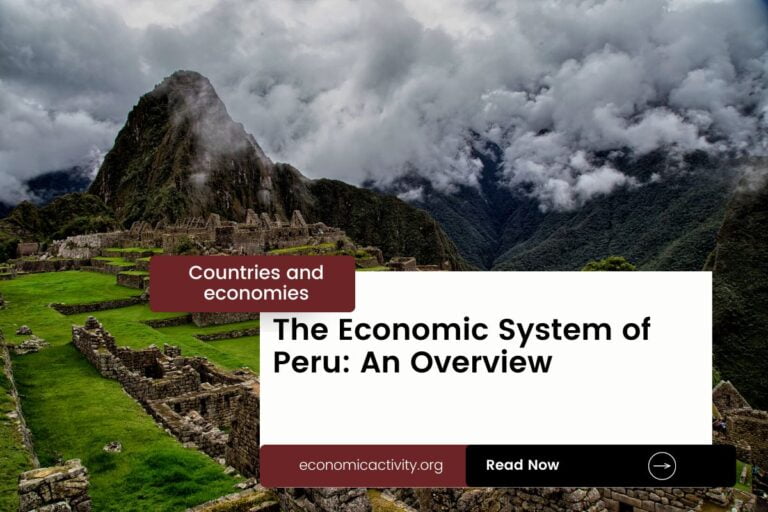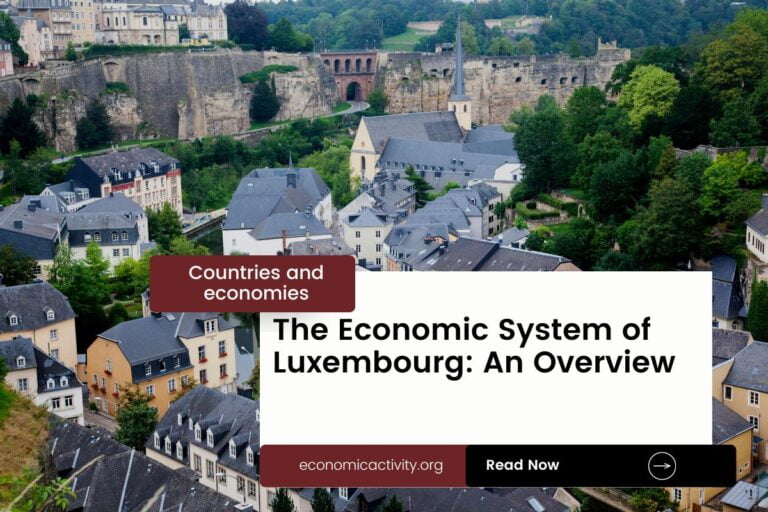Nauru, with a population of 12,668, is ranked 187th in the world, just behind Palau. Located in the Pacific Ocean, it covers 20 square kilometers, ranking 188th, just below Tuvalu.
Nauru’s economic position in 2022 showcases a GDP of $151,647,846.13, ranking it at 186th globally, trailing behind Kiribati with a GDP of $223,353,014.29. Additionally, Nauru’s GDP per capita stands at $11,970.94, placing it at the 69th position worldwide, behind Malaysia with a GDP per capita of $11,993.19.
Despite its small size, Nauru’s economy demonstrates resilience and potential for growth in various sectors.
What are the economic activities of Nauru?
- Primary activities: 6.1% of GDP.
- Secondary activities: 33% of GDP.
- Tertiary activities: 60.8% of GDP.

Primary Sector of Nauru
Nauru’s primary sector, mainly focused on agriculture, thrives due to its tropical climate and abundant natural resources. With 20% of its land dedicated to agriculture, the country produces a variety of crops and animal products such as coconuts, tropical fruits, pork, eggs, chicken, and vegetables.
Despite contributing only 6.1% to the GDP, agriculture plays a crucial role in Nauru’s economy. The top ten agricultural products based on tonnage highlight the diversity and significance of the sector, including papayas, cabbages, and pork offal.
The country’s geological diversity, with rich phosphate deposits and abundant marine life, drives its primary sector. Phosphate mining boosts the economy, while fishing supports livelihoods and sustains local communities.
Secondary Sector of Nauru
What is the secondary sector or what are secondary activities?
The secondary sector involves industries that transform raw materials into finished products for consumption. In Nauru, the main industrial products are offshore services and coconut products. Offshore services include banking, financial, and legal services provided to non-residents. Coconut products include items like coconut oil, coconut cream, and coconut-based food products. These industries play a crucial role in Nauru’s economy by adding value to raw materials and generating income through domestic sales and exports.
In 2023, Nauru’s total exports are dominated by non-manufactured goods, making the contribution of manufactures relatively insignificant to the country’s overall export revenue.
Tertiary sector of Nauru
What is the tertiary sector or what are tertiary activities?
The tertiary sector in Nauru involves providing intangible services to enhance productivity and meet needs. Key activities include healthcare, education, banking, communication, media production, and tourism. These services play a crucial role in the country’s economic development and social well-being.
Of particular importance, Tourism plays a vital role in Nauru’s economy, contributing significantly to its GDP. With an annual tourist arrival rate exceeding its population, popular destinations like Anibare Bay and the Nauru Phosphate Reserves attract visitors seeking unique experiences on this isolated Pacific island nation.
Another example of tertiary economic activity is the mobile cellular sector, which boasts around 10,000 subscriptions, supporting technological growth. With 80 subscriptions per 100 inhabitants, it enhances connectivity and innovation.
International Trade of Nauru
Import Activities of Nauru

The import activities of Nauru are of high importance, with total imports in 2023 reaching 114.83% of the country’s GDP.
Nauru’s main import partners are Australia, China, Japan, Fiji, and New Zealand. The country imports ships, plastic products, other foods, cars, and refined petroleum. Australia is the largest import partner, accounting for 47% of imports.
Exports Activities of Nauru

Nauru’s export activities are of high importance, accounting for 55.5% of its GDP in 2023, with total exports reaching $84,168,182.47. This highlights the significant contribution exports make to the country’s economy.
Nauru’s export activities mainly revolve around fish, phosphates, gas turbines, power equipment, and plastic products. The country’s top export partners are Thailand at 59%, followed by the Philippines at 19%, South Korea at 11%, India at 3%, and Japan at 2%.
Nauru economy challenges in 2024
In 2024, Nauru faces challenges due to phosphate depletion, making its interior uninhabitable. The country relies on fishing licenses and foreign aid, with the closure of the tax haven adding to economic strain. Hosting Australia’s Regional Processing Centre brings social and political pressures.




Leave a Reply